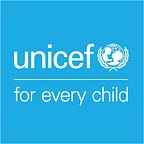Building nutrition security
UNICEF and the European Union (EU) recently launched a joint, four-year nutrition security initiative to achieve sustainable reductions in under-five and maternal under-nutrition. The programme focuses on four countries in sub-Saharan African — including Burkina Faso — and five in Asia.
The Africa programme aims to benefit 25 million children and 5.5 million pregnant or lactating women. In Burkina Faso’s Nord Region, vegetables that were once produced only seasonally now grow year-round.
To reduce entrenched inequities, the initiative is multi-pronged — combining, for example, strengthening national data, district training and community work. A family ploughs their fields in Plateau-Central Region.
It is also cross-sectoral — linking efforts in nutrition, health, water and sanitation, agriculture and social protection — to maximize positive effects. Children accompany women in a vegetable field in Nord Region.
The field is part of 54 hectares of land cultivated by a women’s collective that benefits from the UNICEF-assisted programme. A woman pauses from tending vegetables to breastfeed her child.
Local programmes underpin national efforts to institute effective nutrition security policies that, in turn, could positively influence neighbouring countries. A villager in Plateau-Central Region.
To sustain gains, it is important that communities own the decision-making and the processes that improve nutrition security. Sorting millet grains, in Tamidou Village, Plateau-Central Region.
This includes rejecting unproductive traditions while maximizing positive resources — such as néré seeds, a nutrition-rich addition to many foods. Balls of néré seeds at a market in Nord Region.
To achieve optimal child and maternal health, changes in nutrition-related beliefs and actions need to involve both the young and their elders. Girls pound grain in Tamidou Village.
Local NGOs also promote nutrition education. At a market in Nord region, a community worker from AMMIE — Moral, Material and Intellectual Support for Children — discusses the nutritional value of different foods.
Another market vendor trained by AMMIE shares what she has learned with a woman shopper, at the market in the town of Ouahigouya, Nord Region. AMMIE is assisted by UNICEF.
AMMIE also runs outreach health and educational sessions on child nutrition in rural communities. Topics include food groups and the nutritional value of different produce types. A session in Tilli Village, Nord Region.
A baby’s arm is measured to assess his nutritional status — part of the routine growth-monitoring offered during these sessions. Early detection of deficiencies is essential to prevent nutrition-related illnesses.
Many sessions also provide children with nutritional porridge and teach parents how to prepare it. A woman feeds her son during the Tilli health session.
And local theatre troupes like Naaba Saneem, which performs throughout rural areas, also help promote best practices for optimum child health. A skit on the importance of breastfeeding, in Tamidou Village.
Children and parents alike enjoy and learn from these performances, which cover a range of nutrition-related topics, including proper hygiene.
Safe water and sanitation practices — to guard against water-borne diseases that threaten child nutrition — are another key programme element. A communal safe water pump in Tamidou.
Ensuring that families adopt good hygiene habits is part of improved sanitation. Mamounata Kabore bathes her 9-month-old son, Oumarou Ouedraogo, while his brothers play nearby, at their home in Tamidou.
As the entire programme progresses, practices to realize optimal child and maternal nutrition are entering the home. Oumarou Ouedraogo eats nutritional porridge that his mother has prepared.
The initiative is just beginning in Burkina Faso, but there are also urgent needs. The country is one of eight in the Sahel suffering yet another drought-related food shortage. Corn kernels for planting, in Tamidou.
In response, UNICEF, with the EU and other partners, is assisting the most vulnerable children. But a commitment to long-term solutions is also vital. A woman transplants seedlings, in Noussou Village, Nord Region.
Ending child and maternal under-nutrition — which, globally, contribute to over one third of all child deaths — is a daunting challenge. But it is possible and would create unprecedented benefits for all. Nord Region.
Originally published on www.unicef.org/photography in July 2012.
